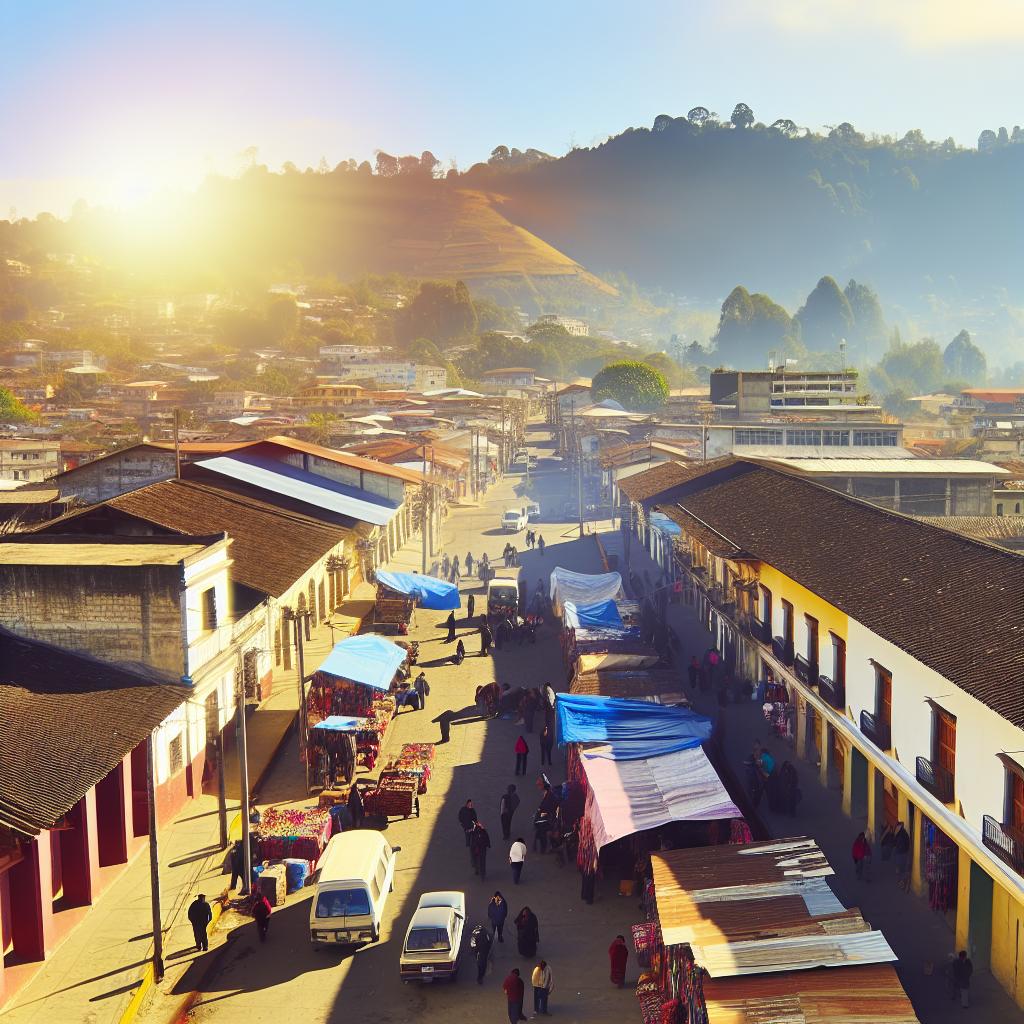Contents
Geographical Overview
Chimaltenango is a department located in the southwestern region of Guatemala. It is situated just west of the nation’s capital, Guatemala City. The department is characterized by its mountainous terrain, with the predominant feature being the Sierra Madre mountain range. Due to its elevation, Chimaltenango experiences a moderate climate, making it suitable for agriculture. The diverse terrain, coupled with a mild climate, provides an ideal setting for lush orchards and varied vegetation that dot the region.
Important Cities and Towns
The department’s capital is the city of Chimaltenango, which serves as the economic and administrative center. Known for its vibrant markets, the city is a hub of commerce and culture, drawing people from surrounding areas. Other significant urban areas include Antigua Guatemala, renowned for its well-preserved Spanish colonial architecture and colorful cobbled streets, which creates a picturesque atmosphere that attracts tourists from around the world. Patzún is another notable town, famous for its strong sense of indigenous culture and traditions, which are showcased through festivals and local crafts.
Historical Significance
Chimaltenango holds a rich history that dates back centuries. It was originally inhabited by the Kaqchikel people before the arrival of the Spanish in the 16th century. The area boasts numerous archeological sites, providing insights into its pre-Columbian past. Iximche, for instance, served as a crucial ceremonial and political center for the indigenous population and remains a site of historical and cultural importance today. The ruins of Iximche offer a glimpse into the architectural prowess and sophisticated society of the Kaqchikel.
Impact of Earthquakes
Chimaltenango’s position along the Pacific Ring of Fire makes it susceptible to seismic activity. The department has faced several earthquakes, which have impacted both infrastructure and daily life. A significant seismic event occurred in 1976, resulting in considerable damage to buildings and loss of life throughout the region. This earthquake underscored the vulnerability of the region to natural disasters and prompted efforts to implement stricter building codes and improve emergency response strategies. Today, the community is more resilient due to increased awareness and better preparedness for such events.
Economic Activities
The economy of Chimaltenango is primarily based on agriculture. Coffee, maize, and beans are among the main crops cultivated in the region, contributing to both local sustenance and national export. The department’s fertile soil and favorable climate enable diverse agricultural production, which supports a largely agrarian population. The department also has a significant handicraft industry, with textiles and pottery being prominent products. Artisans in the region create intricate weavings and ceramics that reflect both traditional methods and contemporary influences. Moreover, tourism plays a role in the local economy, with visitors drawn to the historical and natural attractions.
Transportation and Infrastructure
Chimaltenango is well connected to other parts of Guatemala through the Inter-American Highway, which runs through the department. This crucial highway facilitates trade and travel, linking Chimaltenango to key commercial hubs. Public transportation includes buses and taxis that serve the local population and tourists. These systems provide affordable and practical options for intra-departmental travel, even to more remote areas. Infrastructure improvements in recent years have enhanced accessibility to various parts of the department, leading to economic growth and improved livelihoods for many residents.
The ongoing development in infrastructure includes modernizing road networks and expanding public services, which support both economic opportunities and quality of life improvements. Residents and visitors alike can enjoy better access to healthcare, education, and markets, thanks to these upgrades. For more detailed travel information and current events in Chimaltenango, consider visiting official Guatemala tourism websites or local government portals.
The future of Chimaltenango appears promising as continued investments in infrastructure, coupled with its rich cultural heritage and natural beauty, make it an attractive destination for both tourism and business. As the department evolves, its resilience and adaptability will be key to navigating the challenges and opportunities that lie ahead.
